In a rapidly changing business environment, organizations are constantly looking for ways to be more efficient, flexible, and collaborative. Agile project management techniques, particularly the Scrum framework, have become one of the most commonly used approaches for teams seeking to address complexity and produce quality products. Odoo, an open-source ERP platform, has several features and capabilities that can greatly facilitate Agile project management with Scrum. In this post, we will review how Odoo’s functionality can assist Scrum teams in increasing productivity and project effectiveness.
Key Features
- Projects and Tasks can be presented with a Kanban view.
- Sprint and Sprint Release Management.
- Scrum Meeting Management with users.
- Product backlog and Sandbox with user stories.
- Report on Project and Task with a display of charts.
- The Website with Project, task, and other detailed view
Project List
Add a new project from the configuration menu project tab
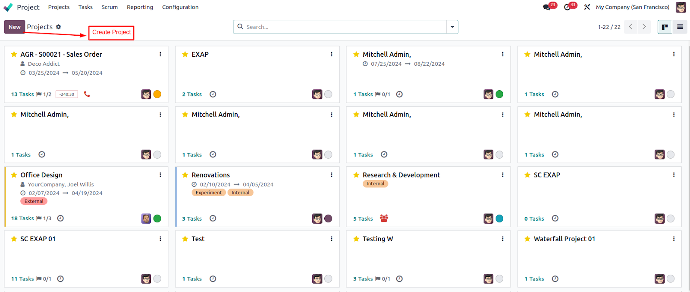

Project Team Management
Creation of Development or project team - add team members and assign the team to particular project
Projects With Kanban View
Will be able to get an overview of All the projects showing - the number of tasks, milestones,s, and other details
Will be able to display all the project details in one view like Documents, Tasks, Backlog, Timesheet, Sales Order
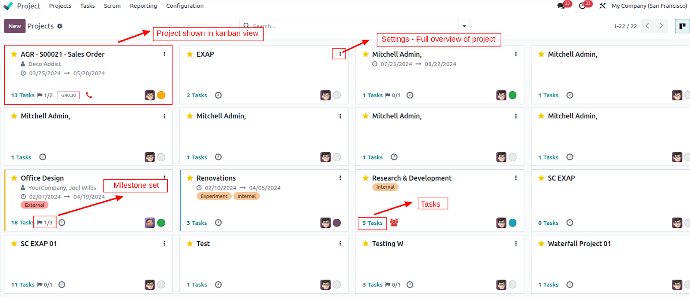
Task View Based On Project
Will be easily able to search the project and Group by Stage, project in the list view
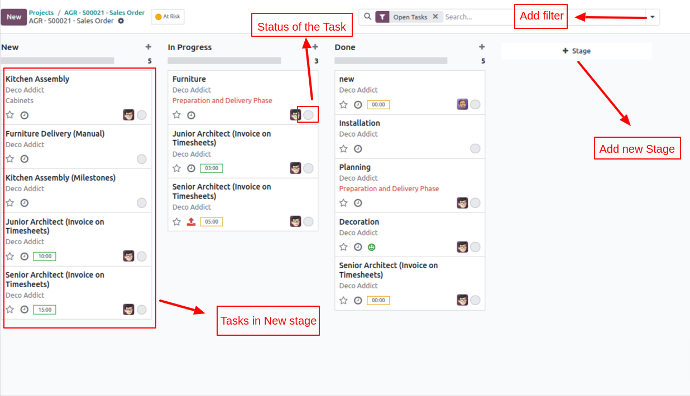
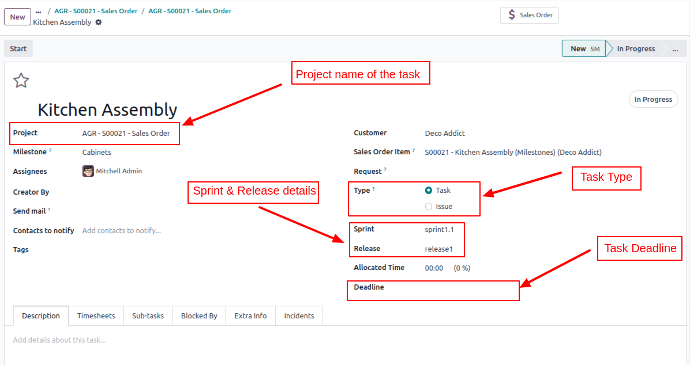
Task Details
- Creation of Task-based on User stories and Project, Sprint release will be automatically fetched from User stories
- Task deadlines can be added. Also task type - Issue or Task we can bifurcate and trace
Sprint Release List
- Will be to track all the releases and create releases. A release will be a group of Sprints and will contain the start date and end date.
- Releases are configured project-wise.
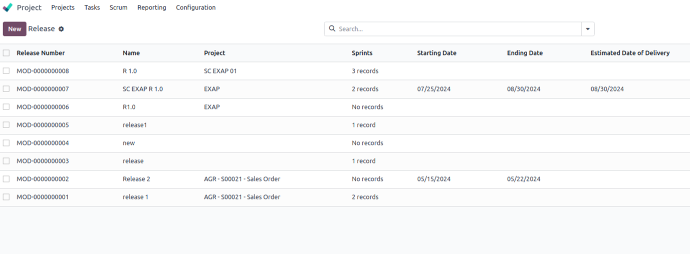
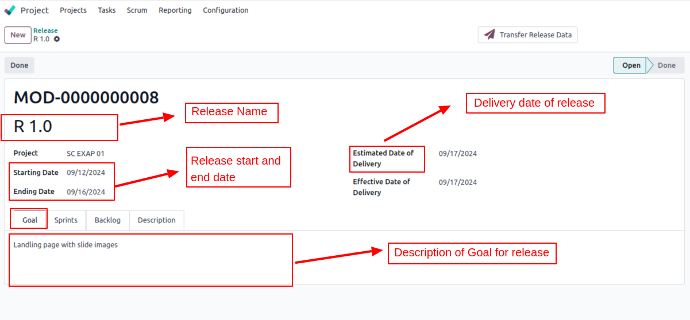
Release Creation With Details
- The goal of the Release outlines the primary objectives and expected outcomes of the release. It describes the specific features, improvements, or fixes being introduced.
- Release Series Number: assigns a unique identifier to each release in a series, such as "Release 5.3." It helps in tracking and managing different versions of the product, ensuring that stakeholders can easily reference and differentiate between various updates and enhancements
Sprint Details In Release
- The Sprint Details section provides a comprehensive breakdown of all sprints included in a particular release.
- Each sprint is a time-boxed development cycle focused on specific goals and deliverables that contribute to the overall release.
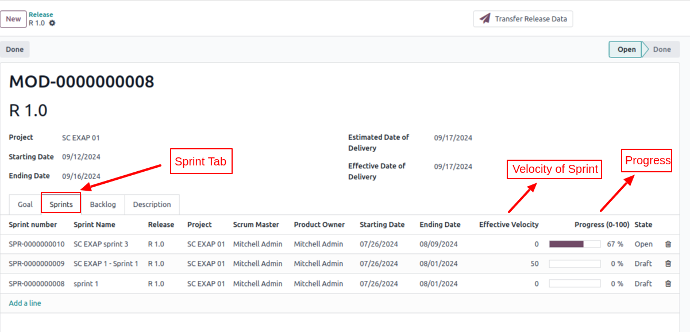

Sprint List For All Projects
- This section encapsulates a complete list of all sprints conducted about one or another project.
- This section encases a complete list and description of all sprints completed for all outlined projects.
User Stories Creation
- This one describes the core parameters of every sprint, such as the sprint name, its beginning and end dates, and what version of the release it is tied to. It enumerates meetings that will be organized regarding the sprint, such as the planning meetings, the stand-up meetings, and the review meetings.
- Furthermore, a backlog of the user stories included in the sprint is offered to inform the in-meeting context about what the team intends to achieve for the specified duration of the sprint.
- Covers a complete list of user stories planned for each sprint. This includes defining what are the users’ needs that are to be satisfied – along with the specifications of particular features or functions that are to be implemented
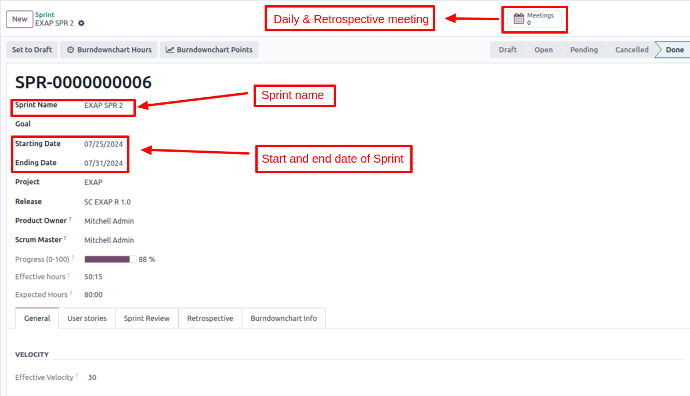
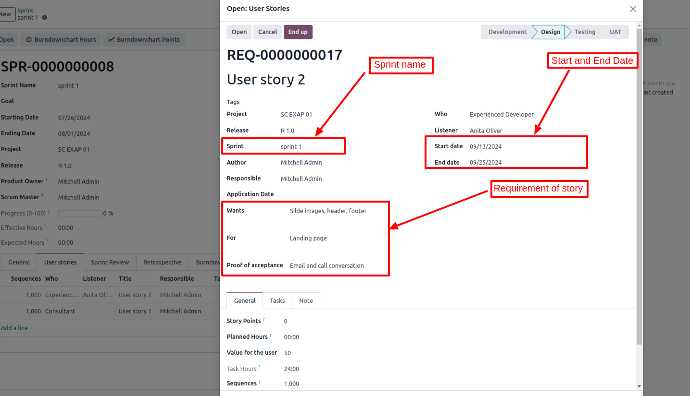
Scrum Meeting List
The scrum meetings are scheduled to address a given sprint or a project. This includes information related to the recurrent scrum meetings such as the daily scrums, sprint planning sessions, the sprint review and retrospective meetings.

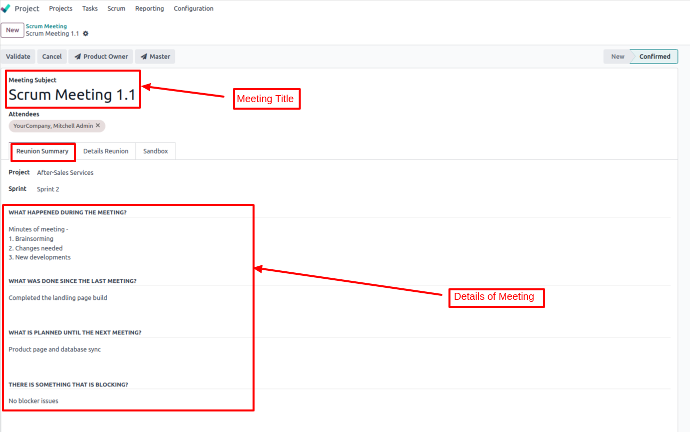
Meeting Details (Backend)
Any entry captures the details of the purpose of the meeting, how often it is held, who is expected to attend it, and when it usually takes place, thus making Zeliro assist in sharing useful information or enabling interaction between team members with regards coordination of scrum activities.
Sandbox Details Added From Meeting
- This section captures updates and information regarding sandbox environments that were discussed in a meeting.
- It includes details about the sandbox's purpose, configuration, and any specific features or data added based on meeting discussions.

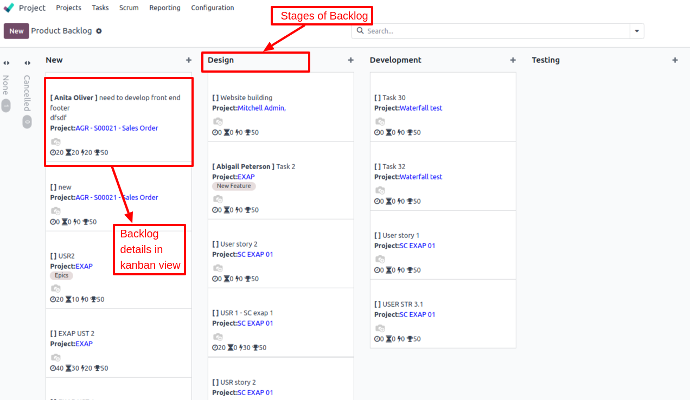
Backlogs With Kanban view
The backlog items using a Kanban board format. It visually organizes tasks and user stories into columns that represent different stages
Front End Access & Project Team details (Website module)
- The front-end components of the project, including who has access to various parts of the user interface and any associated tools or environments.
- It also details the project team members involved, including their roles, responsibilities, and contact information
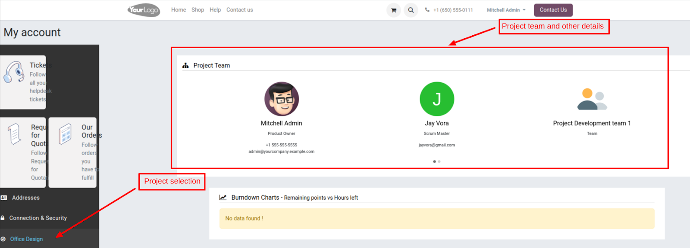
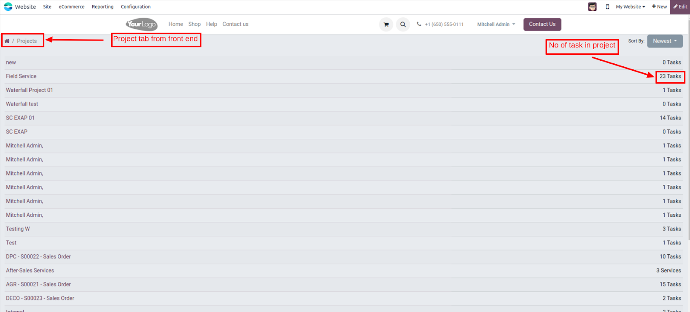
Project List(Website view)
Interactive web application developed to display projects in a clear list and basic project information – name, description, status, start and end date, owner and project progress.
The structure has been designed in such a way that users can easily get information on all the projects with a view of effective management of the project portfolio
The grouping by facility feature organizes tasks according to their respective locations or departments, enhancing visibility and facilitating focused management. This setup helps in efficiently tracking and managing tasks across different facilities while allowing for customized views based on specific needs.
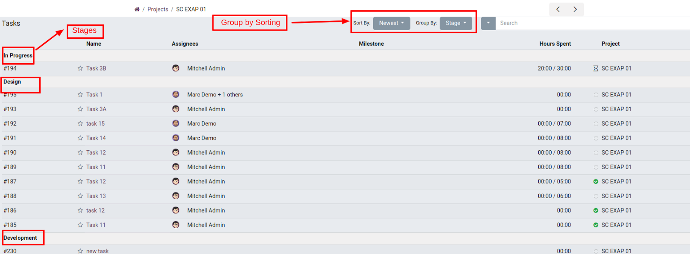

This section describes in detail the sprint plan which facilitates the monitoring and management of activities in each of the sprints. It also consists of filter options that help the user to arrange the task according to status and priority.
The sprint plan views group tasks based on sprint cycles, providing a clear picture of progress and workload distribution. This organized approach enhances visibility into the sprint process, helping teams stay aligned with sprint goals and deadlines while enabling tailored views based on specific project requirements.
The view is organized by individual users, showcasing their specific backlog tasks, which enhances transparency and accountability. This setup helps teams manage and monitor workloads efficiently, providing a clear picture of each user's pending tasks while supporting streamlined project planning and execution.

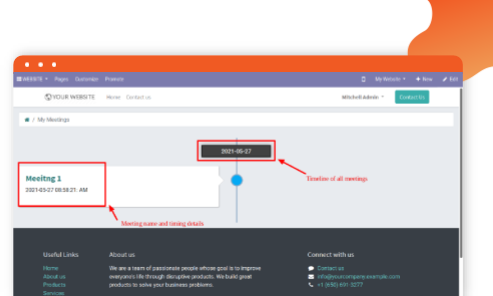
Most items in the list can be sorted with the filtering and sorting functions provided, thus allowing users to manage tasks in a targeted manner.
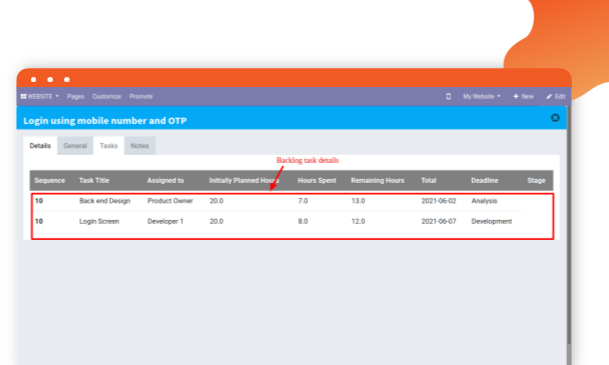
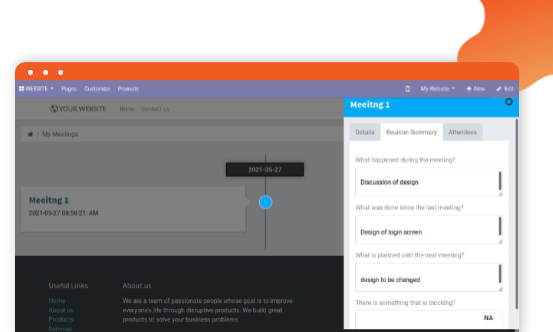
This section enables users to view all the meetings scheduled which can be viewed on the website. It provides a summary of upcoming and conducted meetings, including meeting topics and schedules, participant names, and meeting agendas.
There are also filtering options that enable users to order meetings by date, status, participants and other criteria to help find the required information without much hassle.
Here, sales invoices of all the transactions are captured in detail including invoice numbers, dates, amounts, payment status, and customer information etc.
The burndown charts and graphs deliver clear and interactive depicting of how much work has been completed and how much is left, therefore allowing teams to check their speed and make sure they are on the same pace in achieving their sprint goal.
This acts as a consolidation to the entire customer sales invoices that contain important information such as invoice numbers, invoice dates, invoice number, payment, and customer against the invoice.
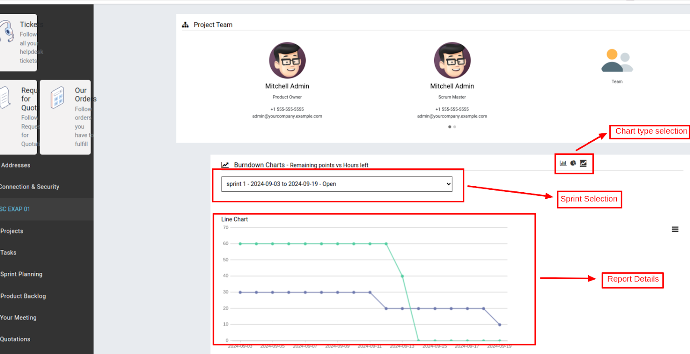

It provides a normal format of all the activities done and helps to follow up, control and check on the sales invoices.
Last but not least the cumulative flow varies only towards the number of tasks instead of the individual tasks through every single quadrant from creation to completion and phase wise and its timeline of being to do, in the process then done.
Using this information, the teams can pinpoint where clogging is occurring, ascertain the allocation of tasks, and determine whether the work is being completed or is getting stuck at some points of completion.
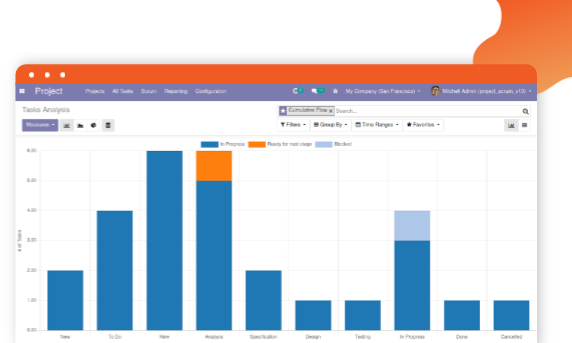
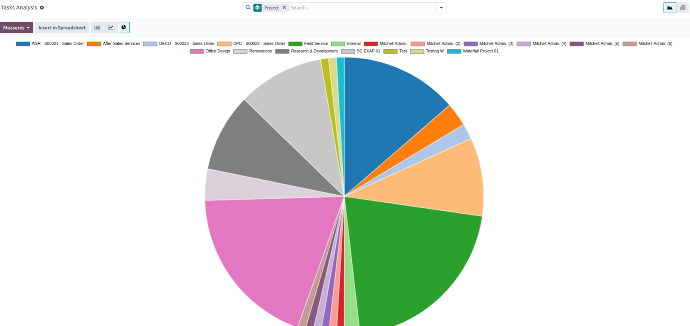
It displays key metrics such as task status, priority, deadlines, and assignees without any predefined filters, giving an all-encompassing overview of project performance.
This report provides a comprehensive analysis of project costs and estimations, offering insights into budget management and financial planning.
It includes detailed information on projected costs, actual expenditures, and variances, helping teams assess whether.



